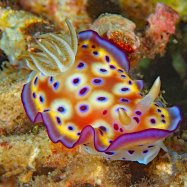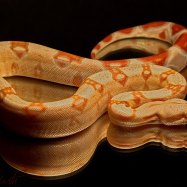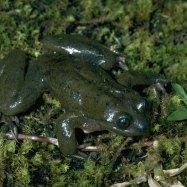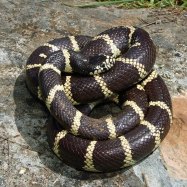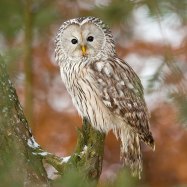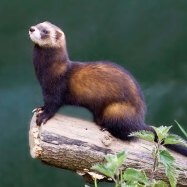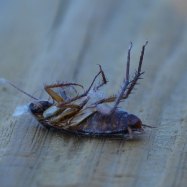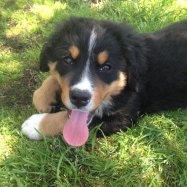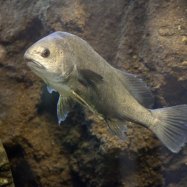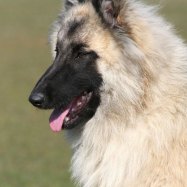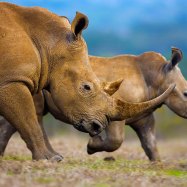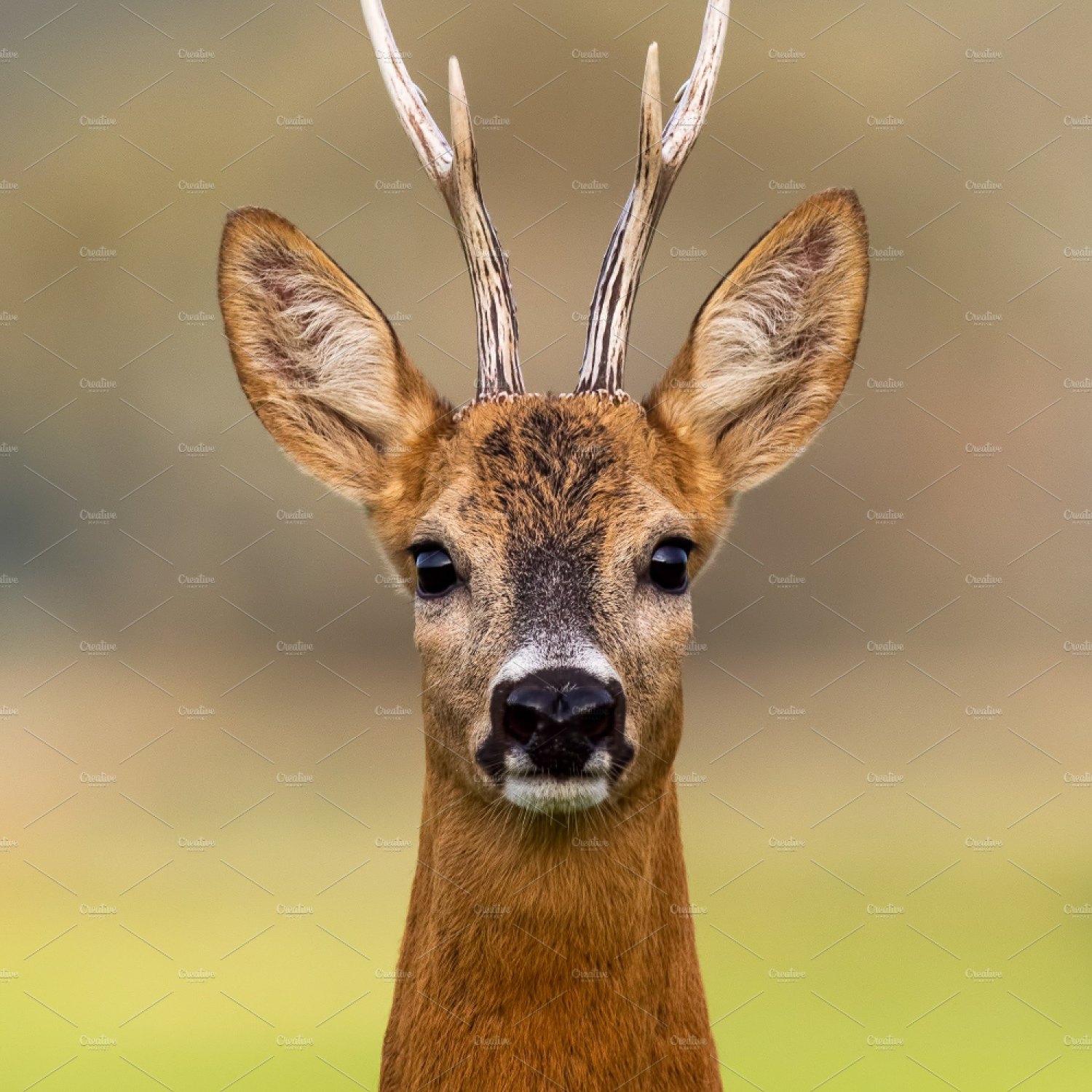
Roe Deer
1-1.3 meters (3.3-4.3 feet)
The Roe Deer, a graceful and agile member of the Cervidae family, can be found in various countries throughout Europe and Asia. Known for its slender body shape, this beautiful animal can reach lengths of 1-1.3 meters (3.3-4.3 feet). Spotting one of these majestic creatures in the wild is a truly unforgettable experience. #RoeDeer #Cervidae #Europeananimals #Asiananimals #gracefulwildlife.
Animal Details Summary:
Common Name: Roe Deer
Kingdom: Animalia
Habitat: Forest, woodland, and grassland areas
Roe Deer: The Agile and Graceful Forest Dwellers of Europe and Asia
Imagine walking through a quiet forest on a crisp autumn morning. You hear the leaves crunching under your feet and the peaceful sound of birdsong in the distance. Suddenly, a flash of reddish-brown catches your eye. You've just spotted a roe deer, gracefully prancing through the trees Roe Deer. These elegant animals have captured the hearts of many nature lovers, and for good reason. With their slender bodies, agile movements, and striking coloration, the roe deer is a creature worth getting to know.A Closer Look at Roe Deer
The roe deer, scientifically known as Capreolus capreolus, is a small deer species that can be found in Europe and Asia. It is the only species within the genus Capreoli, making it a unique and special animal. They are commonly known as roe deer or simply roe, which comes from the Old English word "rāh," meaning a "small red deer."Roe deer belong to the kingdom Animalia, the phylum Chordata, and the class Mammalia. Their order is Artiodactyla, which includes even-toed hoofed animals like deer, cattle, and pigs. Within the family Cervidae, the roe deer is part of the subfamily Capreolinae, or the New World deer. This family also includes other deer species such as moose, elk, and mule deer Rockfish.
A Habitat Fit for Kings
Roe deer are primarily found in forest, woodland, and grassland areas. They are most commonly spotted in Europe and Asia, and they are considered one of the most widespread deer species in these regions. In Europe, roe deer are found in various countries, including the United Kingdom, Ireland, France, Germany, and Poland. In Asia, they can be found in countries such as Russia, China, and Japan.These animals are highly adaptable and can thrive in a variety of habitats. They typically prefer forests with dense underbrush, as it provides them with cover and protection from predators. However, they can also be found in open grasslands and agricultural fields. Roe deer have a wide range of distribution, and their numbers are relatively stable in most countries, making them a common sight in these areas.
A Herbivore's Diet
As herbivores, roe deer mainly feed on plants. They have a diverse diet that includes a variety of herbaceous plants, browse, and fruits. In the summer, they tend to feed on young shoots, leaves, and grasses. During winter, when these food sources are scarce, they turn to pine needles, bark, and nuts. They can also forage for mushrooms, fruits, and berries, depending on the availability in their habitat. Interestingly, roe deer have a specific preference for bramble leaves, and their diet can significantly affect the growth and composition of the forest underbrush.Distinctive Colors and Features
One of the most striking features of roe deer is their coloration. In the summer months, their coat is a reddish-brown color, earning them the nickname "red deer." This color allows them to blend in with the forest floor, providing camouflage from predators. In the winter, their coat turns to a grayish color, making them less visible against the snowy landscape.In general, roe deer have a slender and agile body shape. They have relatively short legs and small hooves, which make them well-adapted for running and leaping through the forest. Roe deer are known for their graceful movements, and their ability to jump up to 6 feet in height and 13 feet in length is truly impressive.
Size and Weight Variations
On average, roe deer measure 1-1.3 meters (3.3-4.3 feet) in length and weigh between 15-35 kilograms (33-77 pounds). However, there can be significant variations in size and weight within the different subspecies of roe deer. In general, the males, known as bucks, are larger than the females, known as does. Bucks also have a distinctive set of antlers, which they use for territorial displays and fighting during the breeding season.The Cycle of Life
Like many other deer species, roe deer follow a regular breeding cycle, with the rut (breeding season) taking place in late summer and early autumn. During this time, the males establish territories and compete with other males for the chance to mate with the females. Once a successful mating occurs, a doe's pregnancy can last around nine months, with usually one or two fawns being born in late spring or early summer.Roe deer fawns are born with white spots on their coat, which provides them with additional camouflage. They are also relatively well-developed and can walk and follow their mothers within a few hours of being born. After a few months, the fawns will start to lose their spots and develop their characteristic reddish-brown coat. Roe deer have a lifespan of around 10-13 years in the wild, with some individuals living up to 16 years.
The Significance of Roe Deer
Beyond their beauty and grace, roe deer play a significant role in the ecosystems they inhabit. As grazers and foragers, they help in the dispersal of seeds, which is essential for the growth and diversity of plant communities. They also act as prey for predators such as wolves, lynx, and bears, keeping the balance of these populations in check. In some areas, they are also hunted by humans for their meat and fur. However, regulated hunting is necessary to maintain healthy roe deer populations and prevent overgrazing in their habitats.Conservation Concerns and Efforts
While roe deer populations are generally stable, there are some concerns regarding their conservation status. Like many other wild animals, they face threats from habitat loss and fragmentation due to human activities such as urbanization, deforestation, and intensive farming. In some areas, they also face the threat of illegal poaching. However, conservation efforts and strict regulations in many countries have helped in maintaining roe deer numbers and their habitats.In addition, various organizations and conservation groups are working towards protecting and promoting the roe deer species. Education and awareness programs are being conducted to educate the public on the significance of these animals and the impact of human activities on their survival. Strategies are also being developed to promote responsible hunting practices and preserve roe deer habitats.
Conclusion
In conclusion, the roe deer is a fascinating and remarkable animal, worthy of our attention and admiration. With their striking coloration, graceful movements, and versatile diet, they have successfully adapted to a range of habitats and have become an integral part of the ecosystems they inhabit. As we continue to learn more about these animals, it is crucial to remember the importance of conservation to ensure the survival of this species for generations to come. So next time you take a walk in the woods, keep an eye out for these enchanting creatures – you never know, you might just spot a roe deer prancing through the trees.

Roe Deer
Animal Details Roe Deer - Scientific Name: Capreolus capreolus
- Category: Animals R
- Scientific Name: Capreolus capreolus
- Common Name: Roe Deer
- Kingdom: Animalia
- Phylum: Chordata
- Class: Mammalia
- Order: Artiodactyla
- Family: Cervidae
- Habitat: Forest, woodland, and grassland areas
- Feeding Method: Herbivore
- Geographical Distribution: Europe and Asia
- Country of Origin: Europe
- Location: Various countries in Europe and Asia
- Animal Coloration: Reddish-brown to gray-brown in summer, grayish in winter
- Body Shape: Slender and agile
- Length: 1-1.3 meters (3.3-4.3 feet)
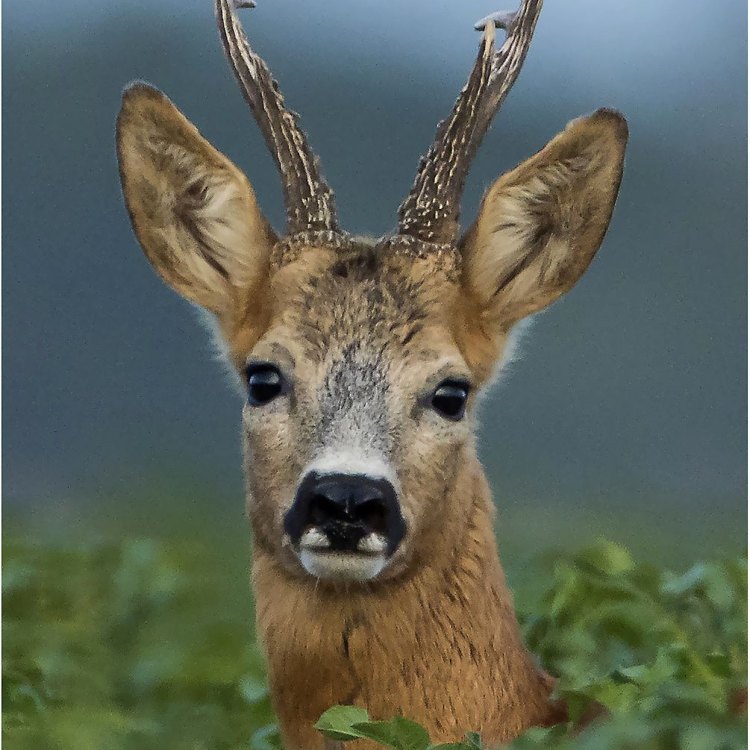
Roe Deer
- Adult Size: Small to medium-sized deer
- Average Lifespan: 10-15 years
- Reproduction: Sexual
- Reproductive Behavior: Polygynous (males mate with multiple females)
- Sound or Call: Barking sound
- Migration Pattern: Non-migratory
- Social Groups: Solitary or small groups
- Behavior: Generally active during dawn and dusk
- Threats: Habitat loss, hunting, road accidents
- Conservation Status: Least Concern
- Impact on Ecosystem: Important herbivores who help maintain vegetation balance
- Human Use: Hunting, meat consumption
- Distinctive Features: White rump, short antlers in males
- Interesting Facts: Roe deer are excellent swimmers
- Predator: Wolves, bears, and lynxes
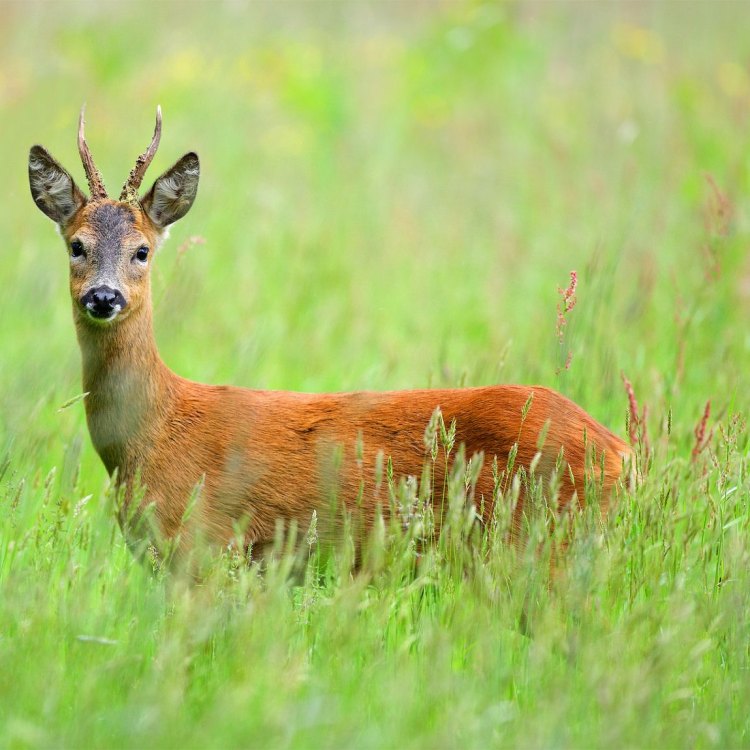
Capreolus capreolus
The Fascinating World of Roe Deer: From Mating Behavior to Survival Tactics
Roe deer, scientifically known as Capreolus capreolus, are small to medium-sized deer found in Europe, Asia, and some parts of the Middle East. They are one of the most common and widespread deer species, thriving in a variety of habitats ranging from forests to open fields.These beautiful creatures have captured the attention of humans for centuries, featured in folklore, literature, and art. But there is still much to learn about these elusive animals, from their unique reproductive behavior to their crucial role in maintaining a balanced ecosystem PeaceOfAnimals.Com.
In this article, we will dive deep into the world of roe deer, exploring their distinctive features, interesting facts, and the challenges they face in the modern world.
The Size and Lifespan of Roe Deer
Roe deer are relatively small in size compared to other deer species, with a shoulder height of only 50-75 cm and a weight of 13-29 kg. Females, also known as does, are slightly smaller than males, also known as bucks.Their diminutive size allows them to move through dense vegetation with ease, making them masters at evading predators. However, their small size also makes them vulnerable to habitat loss and hunting.
On average, roe deer have a lifespan of 10-15 years in the wild, although some have been known to live up to 18 years. In captivity, they can live up to 25 years, but they do not thrive well in captive environments.
Reproductive Behavior: Polygyny and Sexual Mating
Roe deer follow a polygynous mating system, meaning that males mate with multiple females. During the mating season, which typically begins in late July and lasts until August, males will engage in fierce battles to establish dominance and claim their territory Red Drum Fish.Once a male has established his territory, he will urinate on trees and plants, leaving behind a scent that signals his presence to females. When a female enters his territory, he will chase her and try to mate with her.
If the female is receptive, the mating process can last for several hours, with multiple matings taking place over a few days. Once the mating season is over, the male will have to fight off other males to maintain his dominance and his territory.
The Barking Sound of Roe Deer
One of the most distinctive features of roe deer is their barking sound. During the mating season and other times when they feel threatened, roe deer will bark loudly as a warning to other deer in the area.Their barking sound is often described as a single sharp cry, followed by a series of grunts. This sound can be heard from a distance and serves as a way for the deer to communicate with each other.
Although it may seem like the deer are having an argument, the barking is simply a means of establishing and maintaining dominance within their social group.
A Non-Migratory Species
Unlike other deer species, which typically migrate to find food and better living conditions, roe deer are known to be non-migratory. They tend to stay in a relatively small home range throughout their lives.This behavior can be attributed to their ability to adapt to different environments and food sources. They are excellent foragers and can survive on a variety of vegetation, including grasses, leaves, and shoots.
Solitary or Small Group Social Structure
Roe deer are primarily solitary animals, preferring to spend their time alone. However, they can also form small groups consisting of a few females and their offspring.These groups are formed for protection and companionship, and members of the group will often forage together. However, they will not hesitate to separate if they feel threatened.
The Active Behavior of Roe Deer
Roe deer are crepuscular animals, meaning they are most active during dawn and dusk. They have excellent vision, allowing them to navigate through low light conditions, making these the best times for them to forage and mate.During the day, roe deer will find shelter in dense vegetation, making them challenging to spot for predators and humans. This behavior also helps them conserve energy during the hotter months of the year, as they can become very lethargic in high temperatures.
The Most Significant Threats to Roe Deer
Like many other animal species, roe deer face several threats in the modern world. Habitat loss is a significant concern, as forests and open fields are cleared for human development and agriculture.Another significant threat to roe deer is hunting. In some regions, they are hunted for their meat, which is considered a delicacy in certain cultures. They are also hunted for sport, with trophy hunters seeking out male deer with impressive antlers.
Additionally, road accidents are becoming a significant cause of mortality for roe deer. As they are non-migratory, they often have to cross roads to forage, which puts them at risk of being hit by vehicles.
The Conservation Status of Roe Deer
Currently, roe deer are listed as Least Concern by the International Union for Conservation of Nature (IUCN). This classification means that they are not at immediate risk of extinction, but their populations are declining.To ensure the survival of roe deer, conservation efforts are crucial, including preserving and protecting their natural habitats, regulating hunting practices, and implementing wildlife-friendly measures on roads to reduce accidents.
The Impact of Roe Deer on the Ecosystem
Roe deer play a vital role in maintaining the balance of their ecosystem. As herbivores, they keep vegetation in check, preventing overgrowth that can hinder the growth of other plant species.They are also an essential food source for predators such as wolves, bears, and lynxes. Their presence in an area indicates the health of the ecosystem, and their absence can have a ripple effect on other animal populations.
Humans and Roe Deer
For centuries, humans have had a relationship with roe deer. In the past, they were hunted for their meat and fur, and their antlers were prized for their medicinal properties.Today, roe deer hunting is still prevalent, but regulations and restrictions are in place to ensure it is sustainable. Their meat is also consumed in many regions, often as a traditional dish.
On the other hand, humans also pose several threats to the survival of roe deer. As we encroach on their natural habitats, we disrupt their way of life and endanger their existence. But as we continue to learn more about them, we can take steps to protect them and coexist peacefully.
The Distinctive Features and Interesting Facts About Roe Deer
Roe deer are easily recognizable by their distinctive features, including their small size, short antlers in males, and a white rump patch. But there is more to these creatures than meets the eye.One of the most interesting facts about roe deer is their ability to swim. They are excellent swimmers and use this skill to escape from predators or to reach areas with more abundant food sources.
Additionally, roe deer have a unique way of escaping danger. Instead of running away, they will often freeze, relying on their natural camouflage to blend in with their surroundings. This tactic can confuse predators, allowing them to escape undetected.
Predators of Roe Deer
Roe deer face several predators in the wild, including wolves, bears, and lynxes. Wolves, in particular, are the most significant threat, with their highly coordinated attacks and organized pack structure.As predators, these animals play an essential role in controlling the population of roe deer and maintaining a healthy balance in the ecosystem.
In Conclusion
Roe deer may seem small and unassuming, but they are fascinating creatures with a critical role in our ecosystem. From their unique reproductive behavior to their ability to adapt to different environments, they have many qualities that make them stand out among other deer species.As we work towards protecting and preserving our natural habitats and the animals that call it home, let us not forget the importance of the roe deer and their place in the delicate balance of nature.
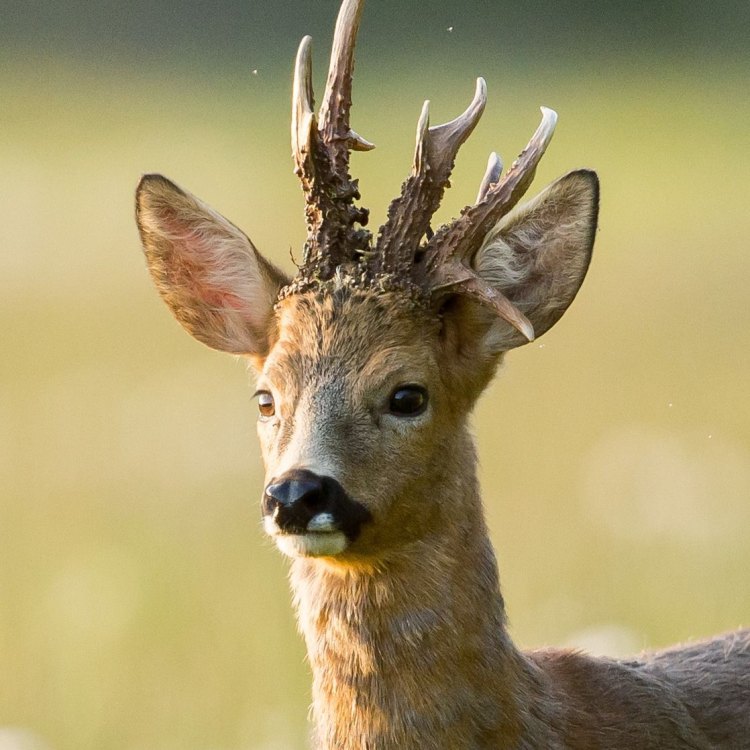
Roe Deer: The Agile and Graceful Forest Dwellers of Europe and Asia
Disclaimer: The content provided is for informational purposes only. We cannot guarantee the accuracy of the information on this page 100%. All information provided here may change without prior notice.

